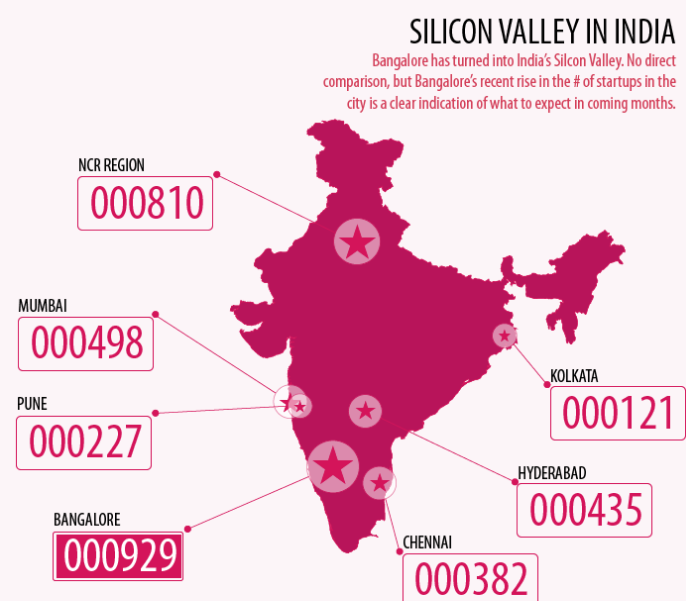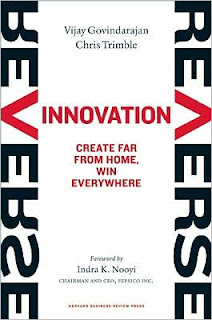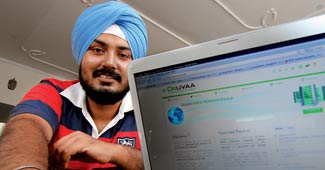- Patience: You should have a lot of patience. Developers will take their own sweet time in building the application and marketing it. Many times, you will want to get in and help them develop. But that is not scalable. Though it will take time, it is better for them to figure out the solutions on their own as in the long run that will mean lesser support.
- Documentation: This is the most important part. You wont believe the amount of support calls that are reduced by having some decent documentation. Unfortunately, this is one area where we still have to improve and thats why we still get support calls.
- Logging: Your platform should explain what is happening behind the scenes to the developer through logs. It will help them in debugging the issue themselves before they reach out to support.
- API: Think through what and how you want to expose your API. Because, once you open it to the public and they start using it, it will be really hard to take back and you will end up supporting multiple versions.
- Evangelize: You should have a team of evangelists who should go to events, do live coding, help hacking communities etc to drive adoption. This is the hardest part, convincing developers to invest their time in learning your platform. It is much harder in India as the hacker community is in a nascent stage(though growing very very well).
- Star products: Every platform should have some star performers. They are the ones which will help in people believing in your product. Identify your star products and put all your efforts in making sure they succeed.
- Mashups and Blog: Build mashups on your platform yourself to showcase the capabilities. You know your platform best, so you will have to build very innovative and fun apps. After building mashups, blog about them and spread the word. Again, in India, its hard to build mashups with content from an Indian context. Till last year, we did not have a lot of APIs for Indian content. But now a lot of companies like Zomato have started opening up APIs and phone mashups can easily be built.
- Support: This will make or break your platform. Developers have very little patience. If they send a mail to support, they better get a response within 5-10 minutes. Otherwise, they will end up Googling for another platform which will solve their platform. Luckily, so far at least we have been able to keep our developers happy with our support. Support does not just mean technical support. Many times we have actually had to mentor a lot of startups building on our platform. You should be willing to listen to their problems and suggest advice if you have any.
- Developer events: You should conduct developer events and hackathons so that the new developers get to know about your platform. Unfortunately, being bootstrapped, we have not yet had funds to do this 🙂
- Sponsor events: In addition to conducting events, another way of getting mindshare of developers is to sponsor events. We are continuous sponsors of Startup Weekend events in India and have also sponsored hackathons in colleges like BITS where students have built very innovative applications.
Think Big! Build a Creative Culture or Transform Into It!
I started writing about Thinking Big and it is turning out to be a serial topic! As Indians, technical stuff comes naturally, business thinking comes naturally, but creativity is a touch-feely subject that many of us are not that comfortable with! We usually give it lip service and move on to more important stuff like coding or making sales calls!
You ask most Software Product Entrepreneurs about their products, and the third sentence will descend into technical details, programming languages and feature sets.
But that’s exactly the opposite of what we need to be thinking about if we want to build globally competitive, big, huge companies right there in India.
The usual disclaimers first – If you are already running a profitable software product company that serves the Indian market, good for you! If you are already running a successful software product company that does not innovate but magically keeps finding customers, revenues and profits, this article is not for you! If you think that Indian Software Product companies need to think small and be happy serving some section of the market, Indian or globally, this article may not be for you.
This article is for companies and entrepreneurs that are wondering how to build a creative culture like that of facebook, google, twitter or Pinterest and scale globally, right there in India.
That starts with the complete buy-in of the founders of a creative culture in the company and they will be successful in as far as they act and do in keeping with that culture. Not all companies are on the same level with respect to this culture but to smaller or greater extents that is something they all must have and do have in common to succeed.
Being creative does not mean thinking up whole new products overnight, but providing and encouraging creativity in whatever function someone performs in your organization. It can be as simple telling your junior-most engineer, “here’s a problem that I want you to solve. I don’t care how you solve it. But come up with something new”, rather than telling them how to solve it, which programming language and tools to use. If they struggle, you can always jump in and guide them but the key question is “Do you give them the chance to attempt something on their own first?” And do you do this every day?
Do not underestimate the influence of Indian Culture in preventing the creative culture from forming in your company. We act in many subtle, unconscious, hierarchical ways in our companies that can snuff the creative instincts in a jiffy. The first time you quickly overrule something creative your engineer has proposed, is the time when the whole thing is dead. People revert back to a subservient mode and wait for instructions, having learned a painful lesson! Others watch this and have learned the same lesson too.
Building a creative culture is hard. Transforming into one is even harder!
It starts with hiring – are you hiring creative people? How would you know? Classic resumes and classic interviewing techniques systematically eliminate the hiring of creative people! When Microsoft or Google or facebook have “strange” interviewing techniques that pose problems that do not have a single solution or involve coming up with creative solutions, they are looking for those people who can think differently and creatively!
I am not suggesting that you forego looking for basic competencies, qualifications and experience. But what are you doing beyond that? If you have one position and you have 25 very qualified, technically vetted people, nothing prevents an Indian start-up from following the same interviewing and testing strategies that some of these companies follow to unearth the creative five among those 25! And hire across India if you could.
Diversity is the essence of creativity. People with different life experiences approach problems differently and you will be all the richer for it since creative juices start flowing when you have people in the same room approaching problems differently!
Once you have hired the creative people, building a creative culture starts at the top and has to be reflected in everything you say and do. Otherwise people get the wrong signals and clam up quickly. How many times have you NOT decided on something technical for your entire engineering team but instead called for a Brainstorming Session? How are you sure that the solution you have thought of is the better one than something any of your engineering team members may come up with on their own? It is worth going through the whole exercise anyway, even if your idea prevails in the end in the interest of your company. But you have sent a subtle message that ideas are welcome, will be considered and evaluated fairly!
In a start-up company it is very hard to do these things with all the time pressures but is certainly worth those extra hours since it will pay off for you in unexpected ways down the road. In a start-up, just remember that you are really grooming a set of leaders that are trained in this creative culture and when they lead groups of people, hopefully they would follow the same lead.
Flex time, brainstorming sessions, ping pong in the cafeteria, team building sessions with humour thrown in for good measure, are all small building blocks that build a creative culture. But they are only the icing on the cake. The cake is you and the management team’s thinking and acting around the company. Does it say – we value creativity and your ideas are welcome?
Transforming an existing culture is even more painful than building one, but it can be done. Unfortunately, not every employee is suitable for that kind of transformation. You will have to do some weeding first. You may have to get rid of people and leaders that don’t buy into this kind of approach and replace them with those that do. Then all the approaches that are recommended for a start-up apply to a mature company also.
To those who say it cannot be done in India and these are high-falutin ideas from out-of-touch expats, I could not carry more disappointing news! I have personally done it in our start-up company in Chennai. We hired people from the North and threw them in with others from the South. Creative cultures are about TRUST and there is nothing more appealing and motivating to a technically qualified, creative fresher than to be trusted with some big task! Not only did we find creative solutions even though our experienced leaders or me could have suggested the way on day 1, you would be surprised how quickly these people trained themselves on the basics, and solved problems. And in unexpected creative ways!
So before you expect BIG things out of your company, ask yourselves the question – Have I built a creative culture? Have I transformed my existing culture into a creative one or at least on the way there?
Creative cultures ask constantly the question “What If we do or have….” and out of that comes big products and big companies. It’s not just a nice-to-have. It is everything! Not Java or Python, iPhone or Android, not nicer offices and a well stocked cafeteria.
Do you trust your employees enough to be creative? Do you give them the chance?
The test of a first-rate intelligence is the ability to hold two opposing ideas in mind at the same time and still retain the ability to function. – F. Scott Fitzgerald
Back to the Future: Software Moves as Catalysts for Driving Change
Several events in the software world during 2012 will have a notable impact on the industry for years to come, according to SandHill’s industry observers. Some are striking enough that our panelists think they deserve an award.
What software event that happened in 2012 will have the most impact over the next two to three years?
Lincoln Murphy, founder and managing director, Sixteen Ventures: From a purely commercial standpoint — software innovation aside — there was one event that should have the attention of everyone from freemium startups to the biggest, entrenched enterprise software vendors: Microsoft’s acquisition of Yammer. Microsoft bought Yammer, a four-year-old company, for $1.2 billion not just to expand their market or for their “Cloud DNA,” but because Yammer was, quite simply, beating them in the market. This should make legacy enterprise software and ISV incumbents open their eyes to the reality of cloud startups in their market.
As an industry, enterprise software companies should have learned from Salesforce.com sneaking up on CRM vendors — including Microsoft — and taking market share. But it was brushed off as an anomaly. In 2012, 2013, and beyond, cloud-native companies disrupting and displacing entrenched, on-premises software vendors is no longer an anomaly; it’s rapidly becoming the norm.
Yammer, a cloud-native company, was winning deals against Microsoft SharePoint; and Microsoft didn’t see it as (or perhaps admit it was) a threat until it was so late that the option of buying Yammer was only available at a premium. If you’re the incumbent on-premises software company being threatened by cloud-native vendors and FUD doesn’t work anymore, what’s your move?
Kevin Cox, vice president corporate marketing, Actian Corporation: The thin client or mobile device or smartphone established itself as the most consumer-desired platform for software consumption and a dramatic extension of cloud as the new most desired platform of software. This will play out over the next three years as a disruptive reshuffling of middleware, applications and service provider markets.
Guy Smith, chief consultant, Silicon Strategies Marketing: The utter domination of Android for smartphones is a shift that cannot be discounted. Android came from nowhere to market dominance in less than two years, which changed everything. There appears to be no slowing its growth save for market saturation. If Apple releases anything like Apple Maps again, their halo sales will drop and Android will own it all.
Build product teams based on established capabilities and chemistry
Jay Pullur is the founder and CEO of Pramati Technologies, software and services company based out of Hyderabad. The company recently announced that it’s enterprise social collaboration software platform — Qontext — had been acquired by Autodesk, the maker of design, engineering and entertainment software. Jay’s career in the software industry spans 25 years, and his primary interest lies in building products for new markets. This has led to Pramati Technologies incubating and spinning-off multiple startups. In an interview with pn.ispirt.in, Jay talks about the importance of a product development team, switching from a services mindset to a product mindset and importance of giving customers not just a product but also an experience.
When you’re conceptualizing a product do you ultimately have the end goal in place or does that fall into place somewhere long the journey?
![]() Well, the end goal is to make the product successful. Normal entrepreneurial expectations are to build the business big enough to pursue the acquisition path, or an IPO. However at Pramati, even before we think about that end goal we practice what we call ‘careful entrepreneurship’ — we don’t venture into something just because we’re passionate about doing something in a certain area or because we want to jump on the bandwagon. Working with an end goal in mind is like playing the game with the sight set on the scoreboard; we might loose track of the ball.
Well, the end goal is to make the product successful. Normal entrepreneurial expectations are to build the business big enough to pursue the acquisition path, or an IPO. However at Pramati, even before we think about that end goal we practice what we call ‘careful entrepreneurship’ — we don’t venture into something just because we’re passionate about doing something in a certain area or because we want to jump on the bandwagon. Working with an end goal in mind is like playing the game with the sight set on the scoreboard; we might loose track of the ball.
Instead, we start an idea in a small fashion, watch it gather momentum and then form a core team. The spectrum of opportunities is wide and how else would one choose? We build a core team around the project with people from within the company who have established capabilities and chemistry. We then have to craft the product pitch and try it out in the market before committing funds to sales and other activities. Based on the product-market fit, we formally make it an independent entity and float it out like a typical startup. This approach as worked better for us.
So on an average, how long does this preparatory phase take? And what’s the profile of this team – do they come from multidisciplinary backgrounds?
Idea development stage can take anywhere up to a year, most often 6 months. During this period, we have a really small team — like for Qontext, we had a three-person team. And they are usually people who’ve been with the company for sometime, so we know they are right for exploring certain aspects. There are many aspects to explore because a product is a confluence of market opportunity and certain technology changes. The company has built strong capabilities to address this confluence in a few chosen areas, and we play around our strengths. The team might include people from technology, user experience, business development, consumer marketing or enterprise sales, and the composition entirely depends on what aspects have to be explored before we dive deep.
So given your background in Wipro, where you were employee #36, getting into the product mindset would have required a different mentality. In Wipro it was about the client doing the spec and asking for something, and the services organization providing the people and delivering the project. How did you resolve yourself to a new business model where the waiting period itself to kick of a project was anywhere between 9-12 months?
 When I started at Wipro, it was early days of the IT industry in the country. We did have to innovate on the services side of the business model in some fashion, however the services industry enjoyed many natural advantages. Understanding the services part of the business gave me good insights as to what is possible in India and the expectations of global clients. But, now we had to innovate on the business model further and we were ready for that.
When I started at Wipro, it was early days of the IT industry in the country. We did have to innovate on the services side of the business model in some fashion, however the services industry enjoyed many natural advantages. Understanding the services part of the business gave me good insights as to what is possible in India and the expectations of global clients. But, now we had to innovate on the business model further and we were ready for that.
I left Wipro with the intention of experimenting and bringing a new level of innovation in the country using the same IT professionals but creating higher value offerings. Those were the days when the Internet was just beginning to boom, so our first product was an infrastructure for web applications. The company vision has been to find the right model for building globally successful products or services and go beyond what the traditional IT industry in India has done.
Talking of teams, you have different very distinct product lines doing some very focused work. How do ensure that the best practices that come out of the product development exercise are replicable across the organization?
Product development no doubt needs very high-levels of skills, capabilities, teamwork and commitment to excellence. And when we are able to that well, we need to ensure that it spreads through the organization and remains as part of our DNA even as we grow.
This actually is a very critical element of our business model and you will notice that we are organized as multiple independent businesses with a core, underlying infrastructure, technical expertise, work culture and purpose. The independent business gives them the freedom of smallness (read startup) structurally and the core brings the power of the big.
In some ways Pramati is not only a software company but also as an incubator and an angel investor with a portfolio of businesses. The strength lies in bringing this synergy between them, and building the infrastructure that is common for all these companies — and this is beyond just providing facilities and finances. It is about building the core capabilities of creating teams, spotting talent and integrating them. The Pramati corporate base provides a common infrastructure such as access to a strong legal and M&A specialists needed for deals like our recent one with Autodesk. Such Corporate development capability is hard to build in a startup, although very essential. Also, our model gives us the opportunity to bring talent in to the company even earlier than we’d actually need. We are always looking to bring the right people in the system and be part of our culture; opportunities may get worked out subsequently.
So in the product development game, if you had to put your finger on three vital resources without which you wouldn’t even contemplate beginning, what would those be?
- Deep understanding of technology. The organizational knowledge in key technology areas plays a big role. It gives us the confidence to deal with changing market needs and customer preferences.
- The ability to think globally. Over the last 14 years we have built complementary operations in both India and the US. So this gives us access to both markets – customers and talent, enabling us to build products and market them.
- Our brand. Customers don’t want to deal with small brands and unknown products. Having been in business for a long time and served thousands of customers across different categories, we understand the kind of expectations customers have. We constantly strive to understand customers better and enhance the experience we deliver.
Typically, Indians have been accused of being great from a technology perspective but are sometimes very poor at packaging and brand building. How have you tackled this?
I think being good at technology alone is not enough. Customers today are expecting more than just a product or a solution — they’re expecting an experience. We always design and build the whole product, not just the software part. Few important things here are – the experience of dealing with company, the first impression with the product, the usability, the interaction with our support team. Nothing less than world-class sells today and no customers are captive; there are hundreds of other players in every market who are ready to service them.
So obviously we had to build a team that’s global in nature finding the right resources in the right place. Fortunately, we found right talent in India who could design user interface and experience that works well for our global customers. However, as a company, we have placed heavy emphasis on packaging, user experience and brand development which has paid off well.
Do Your Bit – Become a Customer
What does a tech-product start-up need initially? It is not money, not more people to join the team according to me.
It needs validation, feedback, users, inputs and all of this comes from Real Customers like you & me. If a product start-up gets real users, customers who engage in day-day usage of the product, they automatically become the following:
The Product Manager, The Well-wisher, The Marketer, The Adviser, The First Investor, and Friend.
Then can come re-iteration, product tweaking, more sales, more customers, more tweaking, more code, more tweaking, more selling and once you have a little bit of traction, then can come the People to join the team (Who will be excited by progress) and the Investors (who could now see Traction).
If the First Customers can do so much for a start-up, then why not the eco-system get stronger by becoming early adopters and customers of more Indian Product companies ?
At Exotel we have been very very progressive on this front as much as we can be and there are limitations as we are a B2B company in India, but we do our bit.
We signed up initially with these companies – HireRabbit (now in TechCrunch) ,MuHive (Social Media Engagement Tool), are looking at Pacebale right now and are always willing to experiment and try new products. We have been very lucky ourselves, there have been companies in the ecosystem who signed up with us though they might have had a more “Known” brand to take, but the entrepreneurs and teams in those young fast growing companies decided to go with us. Carwale, Olacabs, Babajob, CA Club India, Practo, Akosha and more here.
A very small thing I try and do every time on Twitter, is keep connecting people who might have a use of each others products. Prominently I push all Start-up folks on Twitter to use some of the new Cab/Auto aggregators like Olacabs, Taxiforsure, Cabs4Hire, Autowale, Savaari, Yourcabs instead of a Meru or Easy as it helps these young companies get more business and test their mettle. Another thing to do is keep connecting folks looking for Maids/Peon-clerk jobs to Chachii/Mypeon type services or help E-Commerce service/product providers get in touch with E-Commerce companies. There are in-numerable examples of what people already do and we should participate in it.
At the end of the day, if the product/service is good and adds value, the customer will stay and be all of the above.
If you were not given a shot once in your company or by your bosses, employers, customers would you be in this position today? Think about that, and help make the eco-system stronger. You have less to lose and lots to give.
If you think I can help you get connected to someone who could use your product/service, feel free to reach out.
Your Content MVP fails…. eh?
About a month ago, I had a very interesting discussion with Rajan from Intuit about why content is a product and how the lean startup rules should be applied to it.
Let’s get the definitions out of the way.
A minium viable product (MVP) in its simplest form, is the least number of iterations you’ve done on your product before presenting it to someone who you hope will pay for it.
Sure there are lots of loose words here – but I’ll come around to them in a minute. Keywords here are features and pay.
Lets take software first – we’ll talk about content later.
If your software has 2 features, you would obviously want to make sure that the 2 features actually work before you put the MVP out. You cannot expect a person who may buy your software (prospect) to ‘imagine’ what those features will work like. Naturally paying for it gets chucked out of the window.
If it doesn’t do its job – the feature is useless.
Content behaves exactly the same way. In this case the ‘feature’ correlates to ‘objective’.
WHAT is expected from the content piece? WHAT emotions need to be provoked by it? WHAT memories need to be generated in the user’s mind?
You get my drift don’t you?
If content doesn’t do its job – its design, look and feel is useless. The buyer (could be your mother receiving your call or your university of choice receiving your SOP) cannot ‘imagine’ what the infographic will look like. What the VIDEO will turn out like. And what the Brochure design will look like in print.
All they see – is the MVP. So the features better work.
Applying the lean startup rules to content isn’t impossible. It can still be done. However the build-measure-learn loop should now be applied to learning from each content piece. Not the activity of building the content.
So each blog post that you’re writing – can give you the report card that provides you with the right dataset for taking actions towards the next iteration. A better product or a better blog post.
Eric Ries’ and Steve Blank’s concepts around the Lean startup are fundamentals. But just like you’re applying them to your product and its features, think about applying them to your content and its objectives too.
3 tips to ensure your content is MVP ready:
1. Know thy emotion. If you’re presenting to your CEO – know what emotions you are trying to evoke in her – that’s always a good starting point.
I can’t help you if you’ve got a sucky CEO.
2. It’s wrong if it feels wrong. You’ll know when your content piece is doing its job. And when not. The slightest of doubts means its not ready. Don’t put it out. The content’s features aren’t working.
However diagnosing the problem is like fixing a bug. Helps when the herd doesn’t try to solve it.
3. Put in a premise. Before you demo your software, you present a ‘premise’ first. Do that with your content too. Setting the premise will allow your audience to tune-in. Much easier to etch messages when their minds are free.
What have been your most successful content pieces (features)? How do you know that (validated feedback)?
10 reasons why I spend a lot of time in the product ecosystem
As product entrepreneurs, every hour of our time is important. We run businesses that can succeed or fail depending on our choices. One of those choices is the time we spend on the eco-system. Yet I have chosen to spend a lot of time on the ecosystem. Here is why.
1) Learn from mistakes and successes: How much ever you say that you are doing something unique, you will be surprised to see that there is someone else doing something similar. They have made mistakes and they have had successes. Learning not to do their mistakes and learning to emulate their success is vital for your success. Learn every day.
2) Networking is exponential: At first glance networking seems one to one. But if you are genuine, you would be surprised to find that networking can be exponential. Talk to someone, that person talks about you to someone else and soon its viral in a social sort of way. You never know how the stone that goes out comes back positively.
3) Sharpen your knife for free: Get that UI feedback, or sharpen that go to market strategy. What you thought was the best based on your own thinking may turn out to be second best before you got that good opinion.
4) Proactive helping gives joy: I find joy in sharing something to someone, which would save that person from huge mistakes or a lot of effort. Along the way if someone helps me back the same way, I will be happy, but not expect it.
5) Winning awards is much more than being egoistical: Your customers are looking for third party endorsements from reputed organizations. They may not ask you, but seeing one on your site gives them comfort. Win some for you and your company
6) Collaborate to win the market: Many of us attack the same market. How often do you get an inquiry that you cannot use. Share it with someone who need it. You will get one back some day. If we organize ourselves well we can even create a market.
7) Big brother isn’t so difficult with an ecosystem: Learn how to deal with the government. Taxes, banking, laws and much more can be handled much more easily by working with others in similar situations. It is not just learning how to handle a situation, but also acting jointly for getting something done.
8) Mentor or be mentored: You will be surprised at the number of senior people willing to spend their time with you without expecting anything back. Years of experience, yet ready to help you with your problem. Remember to give back why you are ready to mentor too.
9) Get Funded, find a partner, or even find a solution: The ecosystem is a magnet for all kinds of people – investors, solution partners, suppliers and everything in between. Mingle around, be open and gain from it.
10) Make friends along the way: The moment someone realizes that you are helping not for monetary gain, but because you just want to help, you make a friend. Business acquaintances are aplenty, but a friend is rare. I’d love to nurture them.
I’ve met many people who have inspired me along the way. Surprisingly most of the people who inspired me are not ones who speak from podiums, but people who open their hearts out with their passion. Cheers to the software product ecosystem – whatever shape or form it is!!
Guest Post Contributed by George Vettath, Kallos Solutions. Image Courtesy – NPC, Zinnov, Martecker
Building a Product Ecosystem for Startups in NCR region
Despite a lot of matter that is available and the ease with which people network, setting an Product Startup in the NCR region is fraught with challenges that few can perceive in other parts of the country. For one, it is the sheer size of the region, effectively sprawling across three states, dealing with three different governments which pose a challenge. Gurgaon houses some of the larger MNC Services companies and has a very different approach from Product companies functioning out of Noida.
For most entrepreneurs, running a product startup, challenges are aplenty. It is hard to find the right talent – just not skills but also employees, who understand product development and marketing. Once you develop a product, you will find that customers are unfamiliar with ‘Do it Yourself’ model. It’s altogether a different challenge to scale the sales and product.
If you can relate, you will be happy to know that we are launching a platform for NCR Product Startups. It will be a community driven initiative to help out fellow members in the products space. This will be by the Product guys for the Product passionates.
We have put together a short survey to understand where your main pain points are. This will help us lining up help from experts hidden in deep trenches to positively impact your business. Feel free to forward this to folks who can benefit from this initiative…also dont forget to write to us at [email protected] if you would like to volunteer. Thank you and looking forward to creating something which Product Folks will love 🙂
Best products are built, keeping its user experience in mind says Shalin Jain from Tenmiles…
Hypothetically speaking, if one was offered a job and the decision to accept or reject was based on how far one had to travel, would “Tenmiles” be a round enough estimate, to base a rejection on? The answer is locked away somewhere in this piece. Read on to find out…
Education, bunking and creation
Shalin Jain’s enchantment towards Internet started way back, when he was in high school and the thought dawned on him how powerful a tool it was for connecting people. Blog, as a platform for communicating ideas caught on early and he used WordPress as effortlessly and seamlessly as one uses notebooks to make personal notes. Doing B.Sc in Statistics from Loyola college, proved beneficial in many ways. It helped develop an analytical mind and the flexibility to work during those years. At the company that he worked for, Indchem Software Technology, Shalin learnt the ropes in design through ASP & JSP Applications. Submerged in work, college attendance was to take a nosedive. At the behest of the Principal and some paternal advice, Shalin almost took the brow-beaten path of doing an MBA. While still mulling over his future, one day he got a job offer from his old organisation. Though a seasoned hand by now, yet some parts of the student in him remained alive. The distance to workplace and back was approximately 10 Miles. He decided to chuck it. Tenmiles Tenmiles Tenmiles, the words reverberated – what could have been and what he chose.
The Brand Tenmiles
![]() Instantaneously, his creative mind went on an overdrive. What if he started a company with a name like “Tenmiles” and live his dreams. A “no” to something is really about saying “yes” to something else. Thus was born the idea. Initially it was a garage-level operation and the focus of business was on Web Design & Flash programming. Functioning out of the domestic market is very challenging for a startup. The constant “back and forth” approach can be unnerving and puts additional pressure on time and deadline. It also did not help that there were many companies claiming to develop products.
Instantaneously, his creative mind went on an overdrive. What if he started a company with a name like “Tenmiles” and live his dreams. A “no” to something is really about saying “yes” to something else. Thus was born the idea. Initially it was a garage-level operation and the focus of business was on Web Design & Flash programming. Functioning out of the domestic market is very challenging for a startup. The constant “back and forth” approach can be unnerving and puts additional pressure on time and deadline. It also did not help that there were many companies claiming to develop products.
Screenswift, creates installable Flash screensavers from any Flash movie, took only 16 days to develop. There were two versions: Personal edition & the Premium edition later in 2001. This product would gain huge popularity amongst design agencies. The desktop screensaver market was big towards the end of 90’s and early 00’s. Not off late. In 2005, Helpdesk Pilot, another very successful product was launched. In the first month itself, the product got in 11 customers and umpteen sales enquiries. It’s a platform built to help you provide excellent customer support effortlessly. HappyFox was another cloud based customer support software which got launched soon and now happens to be the flagship product. In the words of Shalin, the design element in this product was very good. In 2010, launch of DoAttend established the company’s reputation on strong customer driven focus.
SWOT Analysis
Self admittedly, the company did not have a structured approach to Marketing and only started investing in it, after the launch of DoAttend. Shalin gave the example of a painter, who paints not with “awards” in mind but what the painting is going to look like. Best products are built, keeping its user experience in mind. DoAttend was a very successful product and word-of-mouth marketing, worked to its advantage. The focus was the “customer” and never the media. This approach worked well and brought customers in droves.
The organisation also believes in lean staffing which in a way has resulted in optimising productivity. Shalin is of the firm belief that in case of a multi-product approach, each product must be self sustainable. A half-baked approach never works.
The company has been bootstrapped to generate funds.
Inspiration
In college, Shalin had a neighbour – another youngster who was only older by a few years. This was in the year 1998 – 99. Shalin was in a stage in life where he wasn’t easily distracted and thus had the opportunity to study his neighbour’s methods, his drive, passion. This was perhaps the single-most important trigger.
Building Successful Products
A product can be very good, but with average business scope, whereas it can also be average but with a huge business potential. Every product developer needs to figure out which market they would like to operate in. Here are some tips offered by Shalin for startups:
- Have the end consumer in mind and build accordingly
- Be clear on what is the exact problem you’d like to address by building this product
- Trying to build too much. Too many functionalities might not be the right way
- All great products have a solid focus on design and make sure you have one!
On Product Ecosystem
When he started in 2000, there was nothing of the kind. Developers at that stage, including Shalin were used to experimenting and working without much support. Having said that, it was important to get the right advice, inspiration and a direction. There should be a system in place to do a reality-check. Mentoring sessions usually turn out to be hype. The need of the hour was to get away from jargon-throwing and hand-hold some of the young boys and girls who are only equipped with a brilliant idea. And, there are many.
The country has huge potential and an opportunity to come up with top-notch products which can be world beaters.
Passion, Conviction and Approach to entrepreneurship
Many People keep wondering about the kid who rarely talks at home and not good to get grades in school but went on to become an amazing start-up genius.
Celebrated Lawyer of his time Moti lal Nehru was neither happy with the grades his son got in graduation in England nor with his career as Lawyer. But Jawahar Lal went on to become one of the most celebrated politicians of Independent India.
So, life is not about having a packaged education and career but entrepreneurship which is more about living one’s passion and conviction in life. Passion is the fuel that drives the creation of dreams and conviction is needed to realize those dreams.
This inborn commitment gets you out of bed every day. The aim should excite you to the core and channeling of passion becomes key to success.
Sometimes the idea may give the nay-sayer dizzying nausea due to its grandness and chances of failure.
Successful entrepreneurs know that failure is part of the journey, and that without failure, there is no success. Only in dictionary “success” comes before “failure” not in real life.
Passion without conviction may make a young entrepreneur shooting star in the harsh realities of the world. Conviction streamlines your passion into a steady flow. After all, most people have innovative ideas at some point in their lives.
It is conviction that determines what you do with your ideas.
Do you let it die? Or do you go for it?
Let`s face it: Those who have achieved extreme success had some extra mettle and more importantly commitment to their goal.
It takes strong will power for never want to quit and believing in something that defines you. It is this conviction that takes you to a state of euphoria in which give you confidence to think that you can tackle get to the unachievable which others.
Gandhi successfully took to the fasting for ‘self-penance’ to use his moral force against violence which became surmountable in certain periods before and after independence.
So believe in yourself and at the end of the day, everyone who told you no will deserves some credit for making you more committed towards the coveted goal of your life.
If you are able to relate with this, congratulations!
You`re ready to be an entrepreneur. Your quiver is ready with the right arrows – set of virtues, to yield big things in life. You were born to make a difference. Get on with your idea if you believe you have something special. Challenge the paradigms that bind you, and go change the world.
Contributed by Ajay Data, Data Infosys
5 Tips for creating a compelling product tour
In between that 90-sec video on the homepage introducing your product and a visitor actually signing up for a free trial, there is this glue that is required. The glue that helps visitors map the problems they are looking to solve to the features your product offers. Or the other way round. Back in time when men hunted for food and the web had animated star-shaped red-colored 50% OFF buttons all over, it was a lengthy page usually called Features. Today, when people are busier and the web richer, it has been replaced by what is called the Product Tour.
A product tour is an all-round summary of a product. An all-round summary because it has to bring out all aspects of your product but without going into details like how it allows the color of the error message to be changed from red to pink. It is a very important piece of your product literature, and I am going to talk about the best practices for creating a compelling product tour.
Sell benefits, not features
You have heard this a million times. Make it a million and one. But when it comes to a product tour, the importance of this point cannot be overstated. In fact, it is one the main differences between a deathly-dull-almost-useless feature list and a product tour. A feature list tells the visitor what a product can do, a product tour tells what the product can do for him.
Apple is a master at this, like at most things marketing. For the iPad, rather than listing out all the business features of iOS and the apps it comes along with, Apple just says how business users can be productive right from the start itself.

Write these benefits like you write tweets — simple and crisp, conveying just one point at a time.Mint does this really well with its product tour, a very important piece of literature for them given the sensitive nature of the product.
Make your benefits easier to understand with use cases. Don’t come up with problem-solution scenarios that everyone can directly relate to — they just don’t exist. Use scenarios 80% of your audience can relate to straightaway and let the others draw a parallel. It is better to hit the exact spot with a majority of your audience than try hit close to the spot for all of them. TheFusionCharts product tour, which I was a part of conceptualizing, uses examples in plenty to drive home benefits that would have taken otherwise taken multiple paragraphs.
Group similar benefits
Do not throw all the benefits of your product at once on your visitor’s face. It worked back in the day when the length of the feature list was as important as the features themselves but man has evolved now. Firstly, too much content overwhelms the visitors. These days, they digest it much better in bite-sized chunks. Secondly, for people interested in only a particular angle of the product, a page talking about that angle and around makes it much easier for them.
Freshbooks does this well by grouping benefits under simple action-driven heads.
Or you could group them in the sequential manner the product is going to be used in. With an email marketing tool like Campaign Monitor, a user will design the campaign first, then send it over and finally track its effectiveness, so that’s a good logical way of grouping the benefits.
Make it visual
Get your screenshots, diagrams and photos to do a bulk of the talking. Sure, copy is important and be sure to sum up your point really well in words but the visual is what will ultimately drive home the point. Also, visuals are much easier to scan through and remember.
FusionCharts, which is all about data visualization, has an open layout for the product tour and uses visuals in all shapes and sizes.
Get the visual to convey as much of the benefit as possible. If you can depict a complete use case with the visual, go ahead and do it. Don’t get Company A to work on Project 123 in the screenshot — use real data and real people, like Basecamp.
Do a complete roundup
Users don’t just buy a product, they buy a solution. Tell them what kind of documentation your product comes with. Do you also have demos that helps them get started quickly? What about tech support? MailChimp does this well in its tour.
Do you have an API for developers to create their own apps and add-ons? Is there a community developing them already? JIRA has a dedicated slide about add-ons.
And finally, it’s time to establish the credibility of your product.
Think your navigation through
Now that we are done talking about the content, let’s talk navigation. Where do visitors come to the tour from and where do they head out? What about the things in between? Since the product tour is a glue between attention and conversion, this is a very important piece of the puzzle.
Typically a visitor comes to the tour from the homepage or a landing page. Could the tour be used as a landing page by itself? After all, it sums up the product pretty well, doesn’t it? Unfortunately, there’s no clear answer for this. It depends on your product, the problem your visitors are looking to solve when they hit your website and the length of the tour itself. Just be sure to add the promise of your product right at the start of the tour if you decide to use it as a landing page, so the visitor has the right context before he takes a deep dive into the product.

What about linking to blog posts and videos for more information on a particular feature? Isn’t that a good addition? The products I have used as examples in the post are evenly divided on this question. MailChimp sprinkles links liberally throughout the content and after it.

Basecamp, on the other hand, keeps it all clean.
For me, internal links are not a good addition. The intent with the product tour is to give the visitor an all-round summary of the product and then send him packing to the free trial. Additional links only divert from the intended navigation flow.
If you have to have the deep dive resources, put them all together at the end of the tour. Interested people can check it out from there, and others can simply ignore it.
And now the final part. For product tours having multiple slides, more simply pages, what should you link to at the end of each slide? Rather what should you link to most prominently — the next slide or free trial signup? Again the thoughts on these are pretty mixed, but here’s what I consider best. The slides should have link to the next slide most prominently. Links to sign up for the free trial or register for the newsletter could be present but in lesser glory.

The idea is that if the visitor wants to spend more time understanding the product, let him do that before forcing him to sign up. For someone who figures your product will solve his pain point and wants to sign up immediately, he can always find that link from the main navigation or pick from where they are put out in lesser glory.
Over to you
Do you think the product tour as important as I make it out to be? What are other important considerations to keep in mind for a compelling product tour? Got good examples to share? Go for it.
[Helpful read: Behind the scenes of the FusionCharts product tour]
How far should you go with Professional Services in your product business?
For any products company, product support is a given, and part of the products business fabric. However, almost all Enterprise Products Companies end-up offering the professional services beyond basic product support. These services could range from simplistic implementation support, to integration, to solutions-building, to architectural consulting, to IT advisory support. The decision to perform professional services could be driven by customer-demand, or by the intrinsic need of the product being sold, or even driven by the business strategy itself to generate peripheral revenue.
It’s important to understand where the boundaries lie, and what goal does a certain type of professional services serve. The decision to commit to a particular type of professional services needs to be driven by a conscious thought process. This is important because the time & resources required to build various skills & operating models for serving the various flavors, change dramatically from one to the other.
1. Product Support
This is the core to the products model and serves as just that – support to the main products revenue, and to ensure customer satisfaction. While the core strategy for any product should be to make it so good that it requires minimal support, there’s always a need for support – offline and real-time for the customers.
2. Implementation Services
An ideal product is ready-to-use off-the-shelf, however, in case of Enterprise products the need to configure & customize could wary. Most times, customers demand for an implementation service packaged in the license deal initially, in order to ensure success. Most times, products businesses have to employ this mechanism also to close sales cycle and to ensure a consistent source of post-sale revenue from such services, and also indirectly to ensure expansion of the product usage through consistent personnel presence on the customer premises.
3. Integration Services
This is where it starts going slightly further away from the core skills that the organization may possess organically. Integration with the existing IT systems and other products at the customer premises would require the skills & management practices beyond the core areas of the organization. An extra source of revenue is one of the temptations, but there are also scenarios where integration of the product is critical to the success of the product, making such services mandatory. This is especially true if the product interfaces are not built with open-standards, and require the integrators to know the details of how the product is built internally. The correct approach would be to build the product interfaces in a way that doesn’t force the business into such compromise to induct professional services for integration. There’s an indirect impact of diversion of core product resources to such integration projects unless such professional services are pursued by design, and resources built accordingly.
4. Solutions & Consulting Services
This is where the game gets strategic, and resources expensive. And the reasons to do this are not any more intrinsically important, but strategically targeted to higher value to the customers and hence, access to the larger pie of the wallet. However, this is easier said than done. Unless there’s enough scale & case in the existing business to allow the focus on such services, strategic, and by design, a business is better off focusing on building the core products business stronger by investing resources there. This makes sense for the products, which are more like Platforms that provide larger leverage than in a Point-solution product.
5. Advisory Services
This is important for the products that are targeted for larger ticket sizes and are built for Enterprise-wide deployments. The IT strategy alignment as well as the strategic positioning of the product becomes important, and it also requires much larger IT leadership level involvement. For Enterprise Platforms, or even for departmental level strategic investments, this approach to professional services can bear fruits. However, building it into a business line requires the core product business to be strong, ready for the leap.
So what?
While the Businesses can look at starting off with the lower scale of Professional Services and build up over time, the decision is very strategic and long term. Professional Services, while offering additional top-line, could actually be a resource-intensice and money-draining proposition if not built properly. The mindset that governs the professional services line of business is drastically different from the product side of business. The operational efficiency is paramount, & profitability can very quickly take a hit. Even more importantly, professional services are more intensely people-driven and the skill sets required to build and sustain this business over long term are not trivial. Look, think, and think hard, before you leap.
PS: There are other considerations on Professional Services that directly or indirectly impact the core product business. I will cover in those in the next post. Until then, hope this helps! 🙂
You May Not Like Your Payslip, but We…Love It
SAP acquired Success Factors and Oracle acquired Taleo in billion dollar transactions. Workday recently listed at a billion dollar valuation. The boring enterprise HR software market is suddenly hot – red hot. This excitement is also rubbing off onto a decade old HR Software Product company from Bangalore that aspires to be the first choice provider of HR and Payroll Software to businesses in India.
Today, we hear their story in an interview with the Chief Executive of GreyTip Software – Girish Rowjee.
ProductNation: Welcome to ProductNation. We are really excited to speak to you. Please share your story and your journey towards founding GreyTip. Why did you get started and what prompted you? Please tell us all.
Girish: When we were studying in the 1990’s, the normal practice for most of the engineering pass outs was to do the GRE, get an MS and then get into a job.
Obviously, my co-founder and I did not belong to that dataset. So, during engineering, most of the times we were hanging around the Computer Lab, keen to do a few things around software. Primarily, we wanted to do something in India, not that we had any business plan, but that was the intent. We were driven by the sheer excitement of doing something real. Our first fling was with a Bulletin Board System in 1994, when we had just passed out of college in Mysore.
That is how the whole thing started.
Just to jog the readers’ memory, this was the time when the internet was nascent – dialup modem and text interfaces. But, we were thrilled at the prospect of writing software.
ProductNation: Girish, can you please share details on the equipment you had at that time?
Girish: We had ONE assembled 386 machine ably supported by a stabilizer. The big debate back then was whether we should take a 40 MB or a 120 MB hard disk, as the three thousand rupee difference was 30% of the capital that we had borrowed.
The Bulletin Board Service (BBS) had developed did not take off in Mysore, so we decided to move to Bangalore in November 1994 and start this company. It was called Delphi Software. We decided to stick to BBS in the endeavor to be an information portal for Indian consumers. We realized quickly that this may not work.
At the same time, we got an opportunity to work for a company called Brooke Bond Lipton. This was around developing reporting tools for their HR management information database. It was a new area and a new experience for us as we ourselves were getting introduced to data warehousing. But, we pulled off the project successfully.
Following that the HR team also asked us to build a HR database. It was a critical assignment as it was part of their KRA’s and the appraisal season was just a month away. We were able to do that job successfully as well.
That is how it all truly began. And when the HR staff from Brooke Bond moved to other companies, we followed and that is how we got more work.
ProductNation: That means in the initial period, you guys were helping out companies with IT services and special projects. Is that correct?
Girish: Yes. We even wrote ERP software for a garment manufacturer. At that time, it was the thrill of writing software that was driving us rather than money, business plan, topline and the works. We were making enough money from a self-employment perspective.
It was in 1999 when we started thinking on the need to move beyond a generic IT Services for Business approach. We started focusing on the HR software product. We already had 20 – 25 installations of the product. Payroll was an area we were comfortable with. At that time, many companies were doing payroll but the quality wasn’t enterprise class. That was the gap we were after and we had the competency to address it. With this the HR software product idea got crystallized. We stopped doing everything else and just focused on doing HR software product.
ProductNation: Those were the dotcom days. How did it all go? What did you name the product?
 Girish: Yes. During the 90s, eight character names were needed as DOS supported only 8 character file names. And since our product stood for people, we had named it Folklore. We were one of the firsts to do e-pay slips in companies like Microland and Compaq. Customer referrals helped us acquire more business. Referrals have always been our critical channel and explain why we haven’t really invested big time into marketing initiatives.
Girish: Yes. During the 90s, eight character names were needed as DOS supported only 8 character file names. And since our product stood for people, we had named it Folklore. We were one of the firsts to do e-pay slips in companies like Microland and Compaq. Customer referrals helped us acquire more business. Referrals have always been our critical channel and explain why we haven’t really invested big time into marketing initiatives.
Not everything was good. At the height of the dotcom boom, our development team left for better opportunities. So we had our share of ups and downs. But, we persisted and hung in there.
We drifted for some time and it was only in 2007 that we decided to go for the SaaS option in the pursuit of scale. It took us two years to commission the cloud based product. In the first year, we managed only 50 users in the Bangalore area. The cloud concept was still very new and market acceptance was very cold as compared to today. But, over the years companies started developing comfort with SaaS and cloud concepts. This helped our case.
2011 was a very good year and we currently have more than 1000+ accounts on our cloud platform. We expect more growth going forward and are feeling confident.
ProductNation: Girish, what have been you BIG lessons in your entrepreneurial journey – personal and professional? And what would you like to share with other young product entrepreneurs?
Girish: Any entrepreneur who is setting out for the first time would do well to develop an initial set of customers. These customers should see enough value in the offering. These customers should miss you when you are not around. This also gives the entrepreneur valuable validation of the idea – pricing, potential and scale. This I believe is a much durable milestone to target than VC funding or exciting financial models on spreadsheets.
ProductNation: Well put Girish. An initial set of paying customers sounds really logical, simple and powerful. What about lessons on the personal front? How has it been for you? Any tips here.
Girish: Couple of things. One, an ability to dream and visualize your future realty now is extremely important. You should develop a fair idea how things are going to look two to three years down the line. And of course, an ability to follow that path in a planner manner.
Another is that you should have an ability to convince a few set of people into your vision. These people should be other than your customer – your employees. If you are able to develop this initial set of employees, it would help in your go-to-market.
Passion and desperation are absolutely critical to success. It is only when one is desperate that things start to happen. Money is just a corollary to the value one brings to customers. This is what I believe.
ProductNation: Nicely articulated, Girish. What is next for GreyTip? Could you share some of your future plans?
Girish: We want to the first choice provider of HR and Payroll Software to businesses in India. Across India, we cover about 51 cities and 1000+ accounts. We have gained traction online as well and we would like to focus on the online channel in the future. For this we would endeavor to reach out to Tier II cities helping out organizations with their payroll automation and statutory obligations. We are catering to both enterprise and SME organizations in this pursuit.
ProductNation: Thanks for sharing that. Any moments that you would always cherish as part of the GreyTip story. Would you like to share?
Girish: I would like to narrate an incident. There was a client of ours, a fairly senior person in the corporate World. He said that he wanted to come to our Bangalore office and talk to us. Generally, people don’t come over. So, we were a little unsure. He came over. And shared –“Look, We have used five softwares in the past. But after using your software, the only reason why I am making this visit is to say ‘Thank You’. You have done it for us and relieved us of our headache.” And coming from a fairly senior person, it just made our day. We were really happy that we could make a difference.
It is instances like this that drive us. It is moments like these that mean more than any award or bank balance. In the end, it is the joy of the customers that does the trick for us.
ProductNation: Thank you for speaking to Product Nation. We wish you and your team many more such unusual client visits. Good Luck, Team GreyTip.
The Challenge of “Reverse Innovation”
MNC Structures can impede innovation flows….
In the mid-1970s, the Xerox Corporation faced the first real threat to its domination of the photocopying industry. This threat did not come from IBM or Kodak, the large American companies that had entered the industry. Instead it came from Canon and Ricoh, at that time relatively small Japanese companies.
Xerox had fortified the technological lead it enjoyed due to its patent-protected technology with strong customer relationships, a renowned service network, and a business model built around leasing large and fast copiers to central photocopying facilities within company locations. Realizing that they couldn’t possibly beat Xerox in head-on competition, Canon and Ricoh chose to change the rules of the game. They sold small, relatively slow copiers with limited functionality yet high reliability to individual managers within companies who were looking for options to meet their own copying needs.
Xerox was caught on the wrong foot. With a large base of machines leased out to customers, it was difficult for the company to shift to a model of outright sales. Further, within the US operations, they lacked a small copier product that could compete with what the Japanese were offering.
Ironically though, Xerox’s Japanese affiliate – Fuji Xerox, a joint venture with Fuji Photo Film – had developed small copiers of its own that were particularly suited to the Japanese market. Yet, in a typical case of one-way information flows that often seems to characterize MNCs, Xerox failed to immediately recognize or exploit the products created by Fuji Xerox to compete more effectively with Canon and Ricoh in the US market. By the time they did it was too late.
…But subsidiary initiative can at least deal with local competitive challenges
Innovation by MNC subsidiaries and affiliates has happened in the past when subsidiaries have had to be locally responsive to competitive challenges. In India, we saw the celebrated case of how Hindustan Lever launched Wheel to combat Nirma in the detergent marketplace. In the process, Hindustan Lever had to “borrow” several aspects of its business model from its local Indian competitors. But, such innovations often remained restricted to the host country market, and in the past were seen more as aberrations than an integral part of the company’s strategy.
In several MNCs, subsidiaries still struggle to get the authority to create new products for specific needs of their markets. Subsidiary leaders often have to display entrepreneurship or initiative to overcome the dominant logic that products and technologies flow from the headquarters to the subsidiary and not vice versa.
Govindarajan & Trimble argue for a new logic
In Reverse Innovation (Harvard Business Review Press, 2012), Vijay Govindarajan (VG) and Chris Trimble argue that multinationals need to change this perspective of innovation. And they go one step further – MNCs should not only encourage subsidiaries in large emerging markets to develop “lower cost + lower performance” products for their markets, but should actively create structures and processes to support such innovation.
The rationale for this is simple. Emerging markets are the growth markets of the future, but existing products and services are often not well-suited to these markets – they are over-designed, have too many unnecessary features, and are hence too expensive. If MNCs fail to develop products for emerging markets, they will not only lose out on important growth opportunities, but could potentially create well endowed competitors from these markets who could ultimately threaten them in their home markets.
Reverse Innovation contains some insightful case studies of companies like GE, P&G and Logitech that strategically created products for emerging markets, some of which have subsequently found markets in the developed world as well. The authors call this phenomenon “reverse innovation” because of this latter phenomenon. This constitutes a flow of innovation in a direction opposite to that of what we traditionally saw in MNCs (like in the Xerox story with which I started this post). And, the authors believe that this reverse flow may well be important for the developed world as they face declining growth, lower disposable incomes, and increasing ecological concerns.
The Challenges of Reverse Innovation
I have some reservations about the use of the term “reverse innovation.” It seems somewhat patronizing to the developing world. Notwithstanding this, it appears to be sticking, thanks in no small measure to the Harvard Business Review article by the authors of this book, and GE chairman Jeff Immelt.
But, more importantly, there are some fundamental issues with this phenomenon itself. The first issue is whether MNCs, whose competitive advantage comes traditionally from superior technology and features, can really compete in a price-sensitive, cost-driven market. Anecdotal evidence from the Indian market suggests that GE (the focal company of this book – one of the authors, VG, was a consultant and Professor in Residence at the company) has been struggling to make a commercial success of its reverse-innovated ECG machines and associated products because local competitors have been undercutting GE’s prices. This raises the question of whether, given their overhead structures, MNCs can ever hope to compete on cost with frugal local competitors.
This doubt is reinforced by one of the case studies in the book about a P&G sanitary napkin product specially developed for the Mexican market which suggests that this product enjoys less intellectual property protection than a typical P&G product does, presumably because it doesn’t have such a high degree of proprietary technology in it. At least in India, if it’s a competition for better adaptation and cost efficiency, I would be inclined to put my money on local companies to prevail.
Successful innovation often involves innovating on multiple dimensions. Studies by Doblin, an innovation consulting firm now owned by the Monitor Group, suggest that innovations are more likely to be successful if they incorporate innovation in at least 6 of the 10 dimensions of innovation they have identified. This suggests that MNCs will have to innovate on supply chain, distribution and a host of other business dimensions if they are to make reverse innovation work. (This is reinforced by Hindustan Lever’s success with Wheel where they did exactly that). But, it will be difficult for MNC subsidiaries to make that many changes unless they are really determined to do so. It’s tough to imagine the average GE channel partner selling high ticket price medical equipment being interested in selling low-priced scanners, and the challenge of setting up alternate distribution channels (which the authors say GE is doing) shouldn’t be underestimated.
While the authors should be congratulated for taking the bull by its horns in asking MNCs to embrace complete bottom-up product design if they want to be relevant in emerging markets, they should in my view put greater emphasis on the criticality of fundamental changes in business models that will be required for these newly designed products to be successful in these markets.
And, finally, I wonder whether Clayton Christensen’s theory of disruptive innovation (see my earlier post comparing disruptive and radical innovation) isn’t adequate to describe the nature of innovation VG and Trimble advocate. If so, the major contribution of this book is the emphasis on the changes needed in MNC structures and processes to facilitate such innovation by MNC subsidiaries in emerging markets.
Q&A with Software Startup Druva
Editor’s note: Druva’s inSync is a cloud-based unified solution for managing endpoint data in a mobile world. In this interview, Jaspreet Singh, founder and CEO, explains how the product differentiates in its market and how it provides value for enterprises. He also discusses an important attribute for startup CEOs. This article is brought to SandHill readers in partnership with ProductNation.
SandHill.com: When and where was your company launched?
Jaspreet Singh: We founded Druva in July of 2008 at Pune, India. We eventually moved to the United States after a Sequoia investment in January 2010.
SandHill.com: Please describe your product and your market.
Jaspreet Singh: Druva provides a unified solution to protect and manage endpoint data for enterprises. The solution integrates three functionalities — award winning backup, secure file-sharing and data loss prevention and analytics — to create a single unified cloud for IT to protect, manage and empower end users.
The enterprise endpoint landscape is ever changing. From PCs and laptops to smartphones and tablet devices and now a rising BYOD trend, enterprise data is spread across users, platforms, devices and geographies.
Data protection has been a crowded market space filled with legacy solution providers that have upgraded traditional server backup solutions to fit the mobile enterprise user. This has resulted in a lot of unhappy enterprises and great resistance from the end users to using those products because the solutions are resource intensive or do not offer sufficient security over public networks.
We built inSync specifically for the mobile user to address all the issues that legacy solutions were failing to address. The non-intrusive nature of the solution ensures that end users don’t even know it’s there. Our product helps users make the best use of the data and at the same time enables IT to protect and control the same information. The users can use Druva inSync to share and collaborate with peers on the data from any device. IT gets a single console to back up corporate information, visibility into what and with whom users are sharing, and is able to control the data using data loss prevention and analytics. It’s the industry’s first solution to integrate these features into a single unified solution.






























